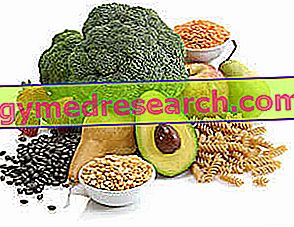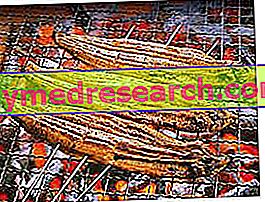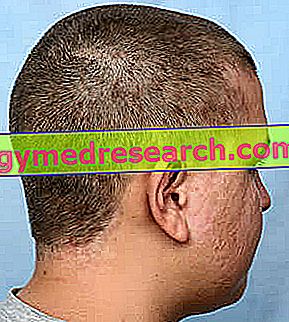The excess of dietary fiber must be estimated in relation to the evaluation of inter- and intra-individual factors that determine subjective variability.
Recommended contribution

Soluble and insoluble fibers
The effect of the soluble fiber on the faeces is of the gelling type, while that of the insoluble fiber is of the fermenting type; the excess of fiber is generally felt through the appearance of some symptoms attributable to the excessive production of gas, therefore meteorism, abdominal distension, flatulence, cramps and NON-physiological increase of faecal evacuation.
The sources of dietary fiber are:
- Vegetables (cereals, legumes, vegetables and fruit)
- mushrooms
Soluble fiber comes mainly from vegetables and fruit, while insoluble fiber comes from cereals. The latter, in addition to being present in greater quantities in foods (especially in whole foods), has the advantage of constituting a category of widely consumed foods: pasta, bread, pizza and all derivatives.
Dietary functions
The correct intake of dietary fiber constitutes several positive functional and metabolic effects:
- Intestinal regulation and increase of prebiotics
- Dilution of the slag related to reduction in the incidence of colorectal cancer
- Glycemic modulation for the slowing of glucose absorption (reduction of the risk of incidence of type 2 diabetes mellitus)
- Reduction of lipid absorption of fatty acids and cholesterol (reduction of the risk of dyslipidemia and coronary heart disease)
- Reduced risk of constipation and diverticulosis, prevention of diverticulitis, prevention of typical acute cases in inflammatory-chronic intestinal diseases
- Increase in gastric satiety
Risks associated with excess
Too much fiber hurts?
The excess of dietary fiber is the consequence of inappropriate nutritional behavior; first of all, the thoughtless integration of concentrated products. These, commonly obtained from the compression of the bran or other cereal processing waste, can negatively affect the symptoms of the irritable bowel worsening the undesirable effects.
On the contrary, the rational increase of soluble fiber intake resulting from foods favors the reduction of colic mucosa irritation and lowers fecal pH by promoting (also thanks to some PREbiotic oligosaccharides) intestinal PRObiotic selection to the detriment of putrescent strains.
However, even the excess of dietary fiber deriving from vegetables and fruit can negatively affect the state of health. Some dietary theories (such as the Zone, the Paleo etc.) promote the free consumption of these foods by praising the beneficial effects and omitting the collateral ones; among the latter, they certainly stand out:
- Tendency to general intestinal malabsorption extended to all nutritional components of the diet: carbohydrates, amino acids, lipids, mineral salts and vitamins
- Excessive intake of phytic acid and oxalic acid, chelating molecules that by binding to some ions (such as iron and calcium) prevent intestinal absorption
- Predisposition to dehydration in case the excess of fiber induces osmotic diarrhea.
The excess of dietary fiber, in the long term, can cause malnutrition or at least alteration of the overall dietary balance.
Bibliography:
- Recommended levels of Nutrient Intake for the Italian population (LARN) - Italian Society of Human Nutrition (SINU) - page 87:89



